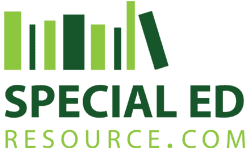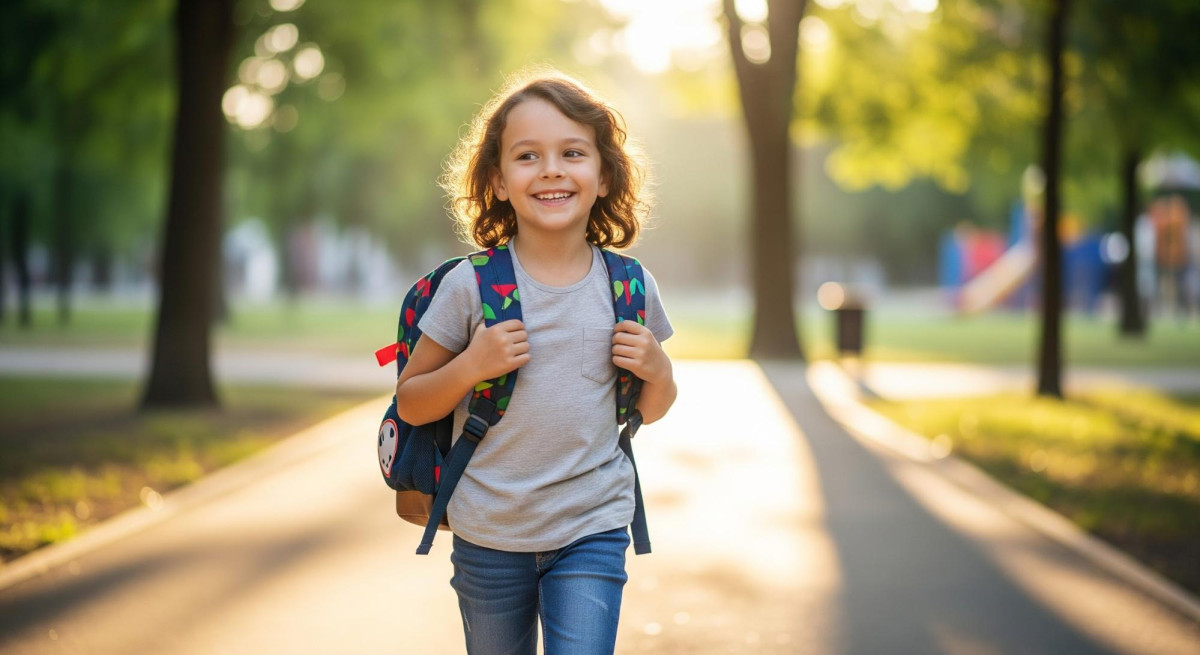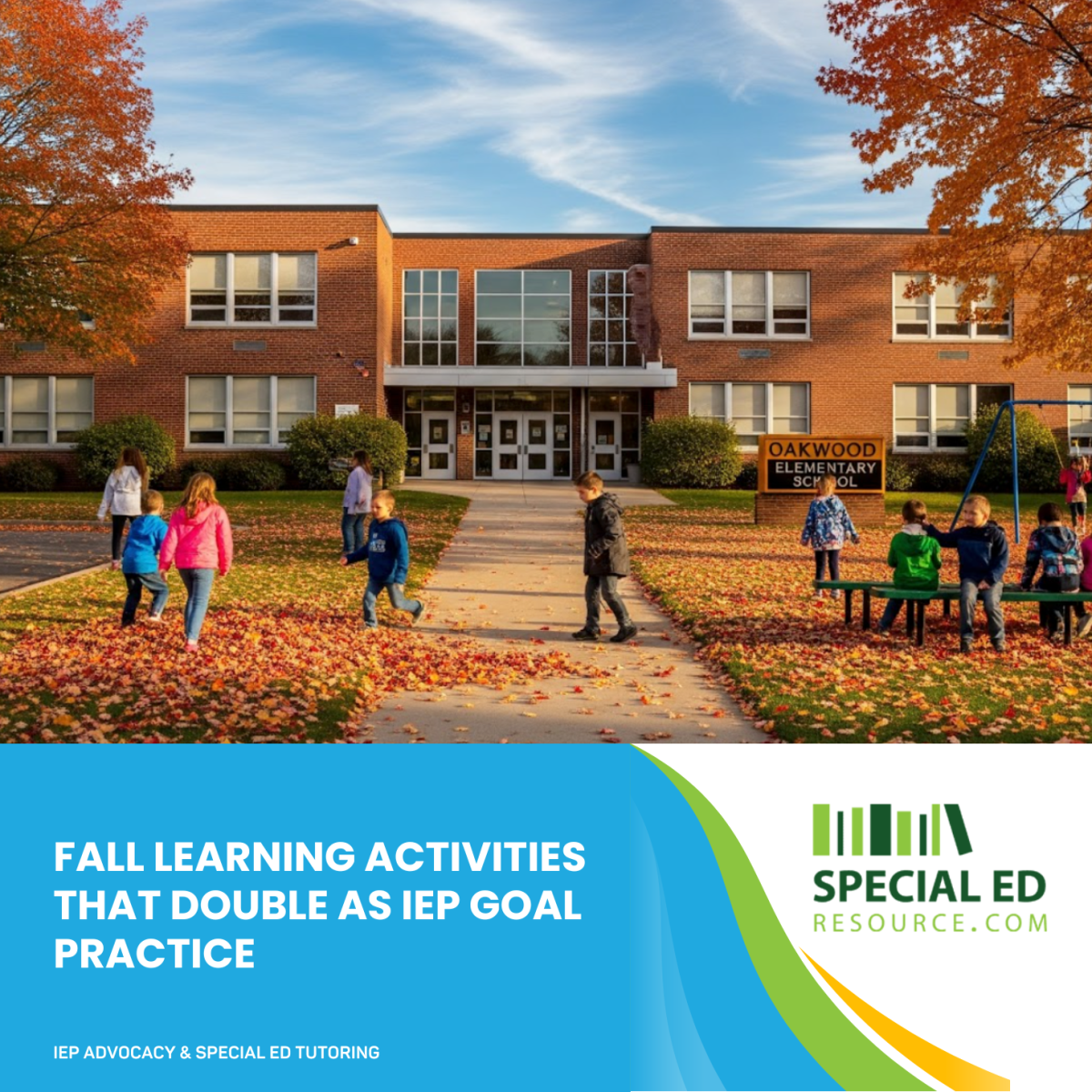Seasonal Fall Activities That Reinforce IEP Goals at Home and in the Classroom
United States - October 31, 2025 / Special Ed Resource LLC /
Fall Learning Fun: Seasonal Activities That Reinforce IEP Goals at Home and School
Autumn brings a burst of color, cooler air, and endless learning opportunities for children of all abilities. For students with Individualized Education Programs (IEPs), the season can be a perfect time to connect academic goals with hands-on experiences.
Leaves, pumpkins, apples, and even falling temperatures become teaching tools – helping students master math, reading, sensory, and social-emotional skills in real-world ways. Whether at home or in the classroom, integrating fall-themed learning supports both engagement and progress toward IEP goals.
That’s exactly the type of practical, meaningful learning that Special Education Resource helps families and educators create – connecting everyday experiences to measurable growth for every child.
Why Seasonal Learning Supports IEP Progress
Children learn best when lessons feel relevant, engaging, and concrete. Seasonal themes like fall offer natural motivation and multi-sensory experiences – perfect for reinforcing IEP goals.
For example:
Math goals can come alive through counting leaves, weighing pumpkins, or measuring ingredients for apple crisp.
Reading and writing goals can be practiced with fall poems, nature journals, or sensory word games.
Social-emotional goals can be strengthened through group art projects, outdoor teamwork, or community service.
These small, structured activities give students the chance to practice skills in new contexts – building confidence, independence, and carryover into everyday life.
Families who work with an IEP advocate often find that blending creativity with structure like this makes progress tracking clearer and more meaningful throughout the school year.
Autumn Activities That Align with Common IEP Goals
IEP goals vary widely, but many fall into similar categories: reading, writing, math, communication, motor skills, and behavior. Below are practical ways to use fall activities to reinforce those goals in fun, low-pressure settings.
1. Reading and Literacy Activities
Autumn offers a treasure trove of sensory-rich reading experiences.
Fall Story Time Hunt: Choose picture books about the season – The Leaf Thief, Goodbye Summer, Hello Autumn, or Pumpkin Soup. As you read, pause to ask questions that build comprehension (“What do you think happens next?” or “Why did the character feel that way?”).
Nature Word Sorts: Collect fall items (leaves, acorns, pinecones) and label them. Encourage sorting by size, color, or texture to connect vocabulary with real objects.
Sequencing Stories: Take a short fall walk and discuss what you saw first, next, and last. Sequencing events helps strengthen reading comprehension and recall.
Students working toward IEP goals for reading fluency or comprehension can make rapid progress when stories connect to the real world and their interests.
2. Writing and Fine Motor Skills
Writing can be challenging for many children with special needs, especially when motor control or confidence is a barrier. Fall-themed writing activities make the process feel creative and approachable.
Leaf Rubbing Journals: Collect leaves and use crayons or colored pencils to make rubbings. Have the child label each leaf or write a short sentence about where it was found.
Pumpkin Poetry: Brainstorm fall-themed words together (crunchy, orange, cozy, windy). Use them to create short poems that reinforce sentence structure and expressive language.
Recipe Writing: Follow a simple recipe for apple cider or trail mix. Students can write or dictate the steps, building sequencing and handwriting skills.
Parents tracking IEP progress at home can use these hands-on projects to document how skills are transferring beyond the classroom. For guidance on how to monitor and record that growth, visit Special Education Resource’s IEP progress tracking page.
3. Math and Problem-Solving Skills
Fall activities make math tangible, helping students see, touch, and manipulate the concepts they’re learning.
Pumpkin Patch Math: Use mini pumpkins for counting, grouping, or simple addition and subtraction.
Apple Graphing: Taste different types of apples and graph preferences by color or flavor. This reinforces data collection and interpretation skills.
Measuring Fall Objects: Compare leaf lengths, pumpkin circumferences, or acorn weights. Measurement is a perfect way to connect hands-on exploration with math goals.
These exercises strengthen numeracy, logic, and reasoning while also encouraging communication about results – supporting both academic and social growth.
4. Speech, Language, and Social Skills
Fall’s sensory appeal makes it ideal for speech and social-emotional learning. The activities below can help students working on communication goals, vocabulary building, or cooperative play.
Sensory Storytelling: Have children describe how fall looks, feels, smells, and sounds. Descriptive language builds expressive vocabulary and supports IEP communication goals.
Team Leaf Art: Pair students to create collages from natural materials. Practicing turn-taking and sharing reinforces social cooperation.
Scavenger Hunt Instructions: Hide fall items around a classroom or yard. Give verbal or picture-based clues to encourage following directions and comprehension.
By using seasonal contexts, speech and language learning becomes both natural and fun. These small, consistent activities can make a big difference in meeting IEP targets.
5. Behavior, Focus, and Emotional Regulation
Fall’s slower pace and calming colors can be used intentionally to support emotional regulation and focus.
Sensory Walks: Encourage quiet observation – noticing colors, sounds, and textures. This mindfulness helps students regulate energy and reduce anxiety.
Gratitude Tree: Have students write or draw one thing they’re thankful for each day on paper leaves. Gratitude practices support emotional expression and perspective-taking.
Routine Transitions: As seasons change, routines shift too. Use visual schedules or social stories to help students anticipate new environments or activities.
These activities reinforce self-awareness and coping strategies, which are essential components of many behavioral and social IEP goals.
Adapting Activities for Different Ages and Abilities
Not every activity fits every student, but nearly all can be modified. The key is to match the complexity of the task to the student’s current skill level.
For younger learners, keep directions simple, use visuals, and emphasize hands-on participation.
For older students, build in choice and self-direction. They might design a fall science experiment, plan a class event, or write reflections on seasonal changes.
For students with sensory sensitivities, provide options to touch, smell, or observe from a distance – letting them engage in ways that feel safe and comfortable.
This kind of flexibility aligns with the principles of Universal Design for Learning (UDL) and mirrors the individualized strategies outlined in most IEPs.
When parents or teachers are unsure how to adapt an activity appropriately, working with an experienced advocate or special education consultant can help. Special Education Resource partners with families and schools across the U.S. to align instruction with each child’s strengths, challenges, and goals.
Connecting Fall Learning to IEP Advocacy
Fun seasonal learning doesn’t replace IEP work – it strengthens it. Every time a child practices academic or behavioral skills in a natural setting, it provides valuable data for IEP progress tracking.
Documenting this kind of progress can also give parents more insight when preparing for IEP meetings. Advocates help interpret these real-world observations and translate them into measurable evidence of growth.
Through personalized IEP consulting, Special Education Resource ensures families understand how each activity connects to formal goals, helping them speak confidently and collaboratively with their child’s IEP team.
About Special Education Resource
Special Education Resource is transforming how families and schools support special needs students nationwide. Founded by Luke and his wife after their own experiences navigating special education with their children, the company was built on empathy, expertise, and a deep commitment to helping students thrive.
Their mission is simple yet powerful – identify what’s truly holding a student back and dissolve it. By combining personalized tutoring, group instruction, and expert IEP advocacy, they help students not only catch up but accelerate with lasting confidence.
Special Education Resource continues to lead the field with innovative approaches to learning that are practical, measurable, and focused on each child’s potential.

Contact Information:
Special Ed Resource LLC
,
United States
Luke Dalien
(844) 773-3822
https://specialedresource.com/


